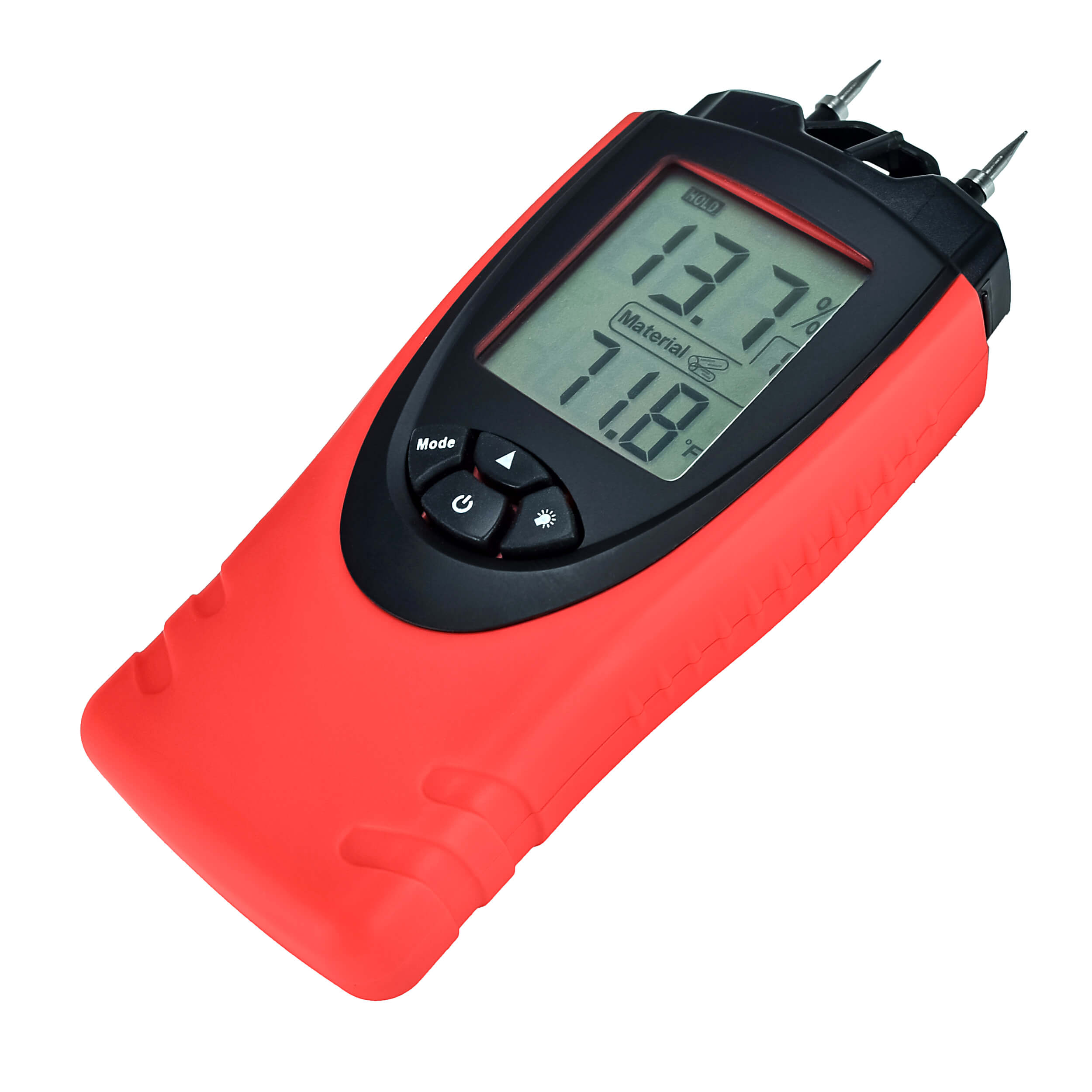The Ultimate Overview to Moisture Meters: A Comprehensive Introduction and Exactly How They Can Save You Money
In the world of structure maintenance, construction, and numerous sectors, the value of precisely measuring dampness degrees can not be overstated. Dampness meters function as important tools in identifying and checking moisture web content in products, aiding in protecting against expensive damages and making certain the high quality of products. Recognizing the nuances of various kinds of dampness meters, their applications, and the prospective cost-saving benefits they use can be a game-changer for companies and professionals alike. Uncovering how these tools can not only simplify processes yet also add to financial cost savings is a trip worth starting.
Sorts Of Moisture Meters
Different kinds of moisture meters are offered for various applications in various markets. One usual type is the pin-type dampness meter, which measures the electrical resistance in between 2 pins inserted right into a product. This type is appropriate for timber, drywall, and other building materials. Pinless dampness meters, on the other hand, use electro-magnetic sensing unit plates to scan a larger area without creating damages to the material's surface. These meters are excellent for quickly evaluating wetness degrees in huge areas such as floors and walls.
Furthermore, there are also specialty wetness meters created for certain products like grain, hay, or dirt. These meters supply exact dampness analyses customized to the one-of-a-kind residential or commercial properties of the material being evaluated. Infrared moisture meters measure the thermal homes of a material to identify its moisture content non-invasively, making them useful for applications where pin or pinless meters may not appropriate. Recognizing the various kinds of wetness meters offered can assist industries choose one of the most proper tool for their particular moisture measurement demands.

Benefits of Making Use Of Moisture Meters

Furthermore, using wetness meters can cause raised power efficiency. By determining areas with high wetness degrees, such as leakages or inadequate insulation, changes can be made to improve energy conservation and reduce utility costs. In agricultural settings, wetness meters play a vital duty in maximizing plant returns by allowing farmers to keep an eye on dirt wetness levels and make notified irrigation decisions. On the whole, the advantages of using moisture meters span across various industries, providing cost-effective solutions and promoting far better high quality control methods.
Exactly How to Choose the Right Moisture Meter
Picking the ideal wetness meter involves taking into consideration crucial aspects such as material compatibility, dimension variety, and calibration accuracy. When picking a wetness meter, it's vital to ensure that the meter is ideal for the particular product you will certainly be testing. Various materials have differing electrical properties that can impact moisture analyses, so selecting a meter designed for your product is essential for exact results. In addition, think about the dimension series of the dampness meter. Guarantee that the meter can detect wetness degrees within the range needed for your applications. Calibration accuracy is one more critical element to maintain in mind (Moisture Meter). Select a dampness meter with dependable calibration to make certain consistent and accurate analyses. Some meters might require regular calibration changes, so understanding the calibration procedure is essential. By thoroughly examining these factors, you can choose a wetness meter that fulfills your needs and offers precise dampness dimensions for your projects.
Appropriate Methods for Moisture Meter Use
To make sure accurate dampness readings and make the most of the performance of a wetness meter, employing appropriate techniques is crucial. When utilizing a pin-type moisture meter, place the pins or probes into the product being examined up until they make complete contact. By adhering to these proper strategies, users can count on their moisture meter to supply trustworthy wetness levels, helping in protecting against expensive damages or guaranteeing high quality in different applications.

Price Cost Savings Through Moisture Meter Applications
How can the critical usage of dampness meters result in substantial price savings throughout various markets? Moisture meters play a vital role in expense financial savings by preventing prospective damages and guaranteeing top quality control in different industries. In the farming industry, moisture meters help in establishing Visit Website the optimal time for gathering plants, preventing over-drying or excess dampness that can impact the final product's top quality. This precise tracking assists farmers stay clear of unnecessary losses and maximize their yield.

Additionally, in the food processing market, wetness meters are necessary for helpful resources checking item top quality and making certain conformity with safety and security laws. By properly gauging dampness web content in food, makers can stop wasting, preserve freshness, and decrease waste, resulting in significant price financial savings. On the whole, the calculated application of wetness meters is an important investment that can lead to significant price reductions and improved performance throughout different markets.
Conclusion
Finally, dampness meters are useful tools for gauging and finding wetness levels in numerous materials. By using the ideal wetness meter and complying with correct methods, users can effectively prevent costly problems brought on by excess moisture. Buying a high quality dampness meter can cause significant price savings in the future by determining possible problems early on and allowing prompt remediation. Inevitably, wetness meters are essential tools for keeping the stability and long life of materials and structures.
Wetness meters offer as indispensable tools in finding and monitoring moisture content in materials, helping in protecting against costly damages and guaranteeing the top quality of items. Infrared dampness meters measure the thermal homes of a product to establish its dampness web content non-invasively, making them useful for applications where pin or pinless meters may not be suitable.Moisture meters provide indispensable benefits in precisely checking and assessing moisture degrees in varied products and settings. In farming setups, wetness meters play a vital duty in maximizing plant yields by allowing farmers to keep track of soil moisture degrees and make educated watering decisions.In conclusion, moisture meters are valuable devices Learn More Here for determining and discovering moisture levels in numerous products.